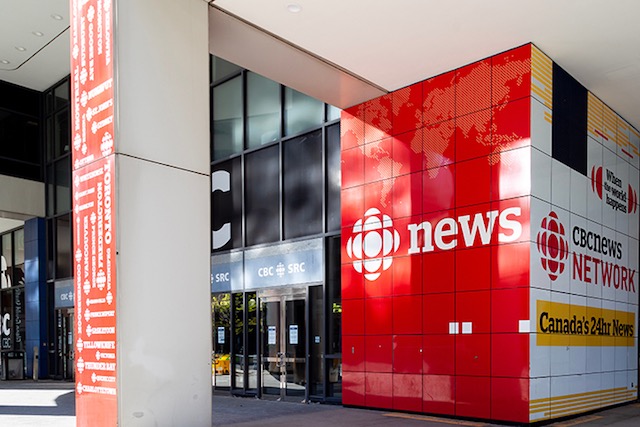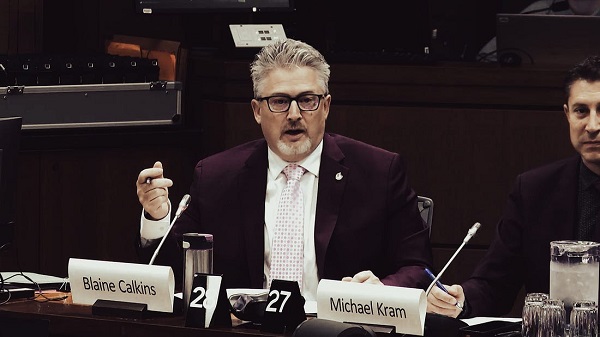Economy
Energy exports continue to fuel the Canadian economy

From the Fraser Institute
Without exports of oil, natural gas and other energy goods, Canada’s cumulative trade deficit with the rest of the world—which stood at $130 billion in the decade ending in 2023—would have ballooned to $1 trillion.
Energy sits at the heart of Canada’s export economy, even though some federal policymakers and provincial governments appear to be discomfited by that fact.
In recent years, energy has supplied 20–25 percent of Canada’s total international exports (goods plus services combined), with crude oil, refined petroleum products, and natural gas making up the lion’s share of our energy-related shipments to other countries. Canada’s energy export basket also includes coal, uranium, and electricity.
In the last two decades, energy has become Canada’s leading export sector, mainly owing to higher oil production volumes, rising hydrocarbon exports, and still-robust global demand for fossil fuels (which provide 80 percent of the world’s primary energy). Measured in millions of barrels of oil equivalent (BOE), Canadian conventional oil and gas production rose from 4.5 million BOE per day in 2015 to 5.4 million/day last year, with most of the additional output destined for the United States. With the completion of pipeline expansion projects and the looming start-up of liquefied natural gas (LNG) production on the West Coast, oil and gas are set to play an even bigger role in Canada’s economy and export portfolio in the coming years.
A May 2024 modelling study by S&P Global Commodity Insights predicts a further jump in conventional oil and gas output of between 0.5 and 1.0 million BOE/day by 2035, assuming the federal government doesn’t impose draconian caps on production in the sector as part of its shambolic climate policy agenda. Based on that scenario, S&P estimates that production, capital and operating spending in Canada’s conventional oil and gas industry will add up to $1.3 trillion to Canada’s gross domestic product by 2035. This forecast is premised on a modest (8 percent) increase in output and further declines in the sector’s greenhouse gas emissions intensity due to efficiency measures, advances in technology, greater use of carbon capture, and other factors.
To illustrate the contribution that energy makes to Canada’s prosperity, the Coalition for A Better Future recently estimated that without exports of oil, natural gas and other energy goods, Canada’s cumulative trade deficit with the rest of the world—which stood at $130 billion in the decade ending in 2023—would have ballooned to $1 trillion.
Thanks to energy production, Canada garners up to $200 billion of additional export receipts each year—and the figure is set to rise significantly in the next decade. This outsized stream of export earnings furnishes the means to pay for imports, supports hundreds of thousands of high-paying jobs, and generates tens of billions of dollars of extra revenues for Canadian governments.
In Canada’s case, it is also worth noting that energy reliably produces the largest trade surplus of any sector, by a wide margin. And, as noted above, that surplus will increase in size over the rest of this decade and possibly beyond, mainly due to oil and gas output and exports climbing from current levels.
Averaged over the period 2022-23, Canada’s two-way trade in energy goods yielded a net annual surplus of almost $150 billion. This dwarfs the surpluses posted in other natural resource-based sectors such as metal ores, non-metallic minerals, agri-food, and forest products. Large trade surpluses in energy—and, to a lesser extent, in other natural resource industries—offset chronic Canadian trade deficits in consumer goods, machinery and equipment, electronic products, and other high-tech goods. Canada also runs a trade deficit of $35-40 billion in motor vehicles and parts.
Trudeau government ministers are fond of talking up (and subsidizing) Canadian non-fossil fuel energy industries, like (carbon-free) electricity, biofuels, hydrogen (production of which currently is almost non-existent in Canada) and the “clean tech” sector. However, except for electricity, these segments of the Canadian energy sector are very small in size and export little. And while the “clean tech” industry does hold considerable promise over the medium term, today it accounts for less than one percent of Canada’s international exports.
When it comes to energy exports, the reality for Canada is that oil, natural gas, and other fossil fuel products dominate the picture—and will continue to do so for the foreseeable future.
Author:
Business
Canada’s combative trade tactics are backfiring

This article supplied by Troy Media.
Defiant messaging may play well at home, but abroad it fuels mistrust, higher tariffs and a steady erosion of Canada’s agri-food exports
The real threat to Canadian exporters isn’t U.S. President Donald Trump’s tariffs, it’s Ottawa and Queen’s Park’s reckless diplomacy.
The latest tariff hike, whether triggered by Ontario’s anti-tariff ad campaign or not, is only a symptom. The deeper problem is Canada’s escalating loss of credibility at the trade table. Washington’s move to raise duties from 35 per cent to 45 per cent on nonCUSMA imports (goods not covered under the Canada-United States-Mexico Agreement, the successor to NAFTA) reflects a diplomatic climate that is quickly souring, with very real consequences for Canadian exporters.
Some analysts argue that a 10-point tariff increase is inconsequential. It is not. The issue isn’t just what is being tariffed; it is the tone of the relationship. Canada is increasingly seen as erratic and reactive, negotiating from emotion rather than strategy. That kind of reputation is dangerous when dealing with the U.S., which remains Canada’s most important trade partner by a wide margin.
Ontario Premier Doug Ford’s stand up to America messaging, complete with a nostalgic Ronald Reagan cameo, may have been rooted in genuine conviction. Many Canadians share his instinct to defend the country’s interests with bold language. But in diplomacy, tone often outweighs intent. What plays well domestically can sound defiant abroad, and the consequences are already being felt in boardrooms and warehouses across the country.
Ford’s public criticisms of companies such as Crown Royal, accused of abandoning Ontario, and Stellantis, which recently announced it will shift production of its Jeep Compass from Brampton to Illinois as part of a US$13 billion U.S. investment, may appeal to voters who like to see politicians get tough. But those theatrics reinforce the impression that Canada is hostile to
international investors. At a time when global capital can move freely, that perception is damaging. Collaboration, not confrontation, is what’s needed most to secure investment in Canada’s economy.
Such rhetoric fuels uncertainty on both sides of the border. The results are clear: higher tariffs, weaker investor confidence and American partners quietly pivoting away from Canadian suppliers.
Many Canadian food exporters are already losing U.S. accounts, not because of trade rules but because of eroding trust. Executives in the agri-food sector are beginning to wonder whether Canada can still be counted on as a reliable partner, and some have already shifted contracts southward.
Ford’s political campaigns may win applause locally, but Washington’s retaliatory measures do not distinguish between provinces. They hit all exporters, including Canada’s food manufacturers that rely heavily on the U.S. market, which purchases more than half of Canada’s agri-food exports. That means farmers, processors and transportation companies across the country are caught in the crossfire.
Those who believe the new 45 per cent rate will have little effect are mistaken. Some Canadian importers now face steeper duties than competitors in Vietnam, Laos or even Myanmar. And while tariffs matter, perception matters more. Right now, the optics for Canada’s agri-food sector are poor, and once confidence is lost, it is difficult to regain.
While many Canadians dismiss Trump as unpredictable, the deeper question is what happened to Canada’s once-cohesive Team Canada approach to trade. The agri-food industry depends on stability and predictability. Alienating our largest customer, representing 34 per cent of the global consumer market and millions of Canadian jobs tied to trade, is not just short-sighted, it’s economically reckless.
There is no trade war. What we are witnessing is an American recalibration of domestic fiscal policy with global consequences. Canada must adapt with prudence, not posturing.
The lesson is simple: reckless rhetoric is costing Canada far more than tariffs. It’s time to change course, especially at Queen’s Park.
Dr. Sylvain Charlebois is a Canadian professor and researcher in food distribution and policy. He is senior director of the Agri-Food Analytics Lab at Dalhousie University and co-host of The Food Professor Podcast. He is frequently cited in the media for his insights on food prices, agricultural trends, and the global food supply chain
Troy Media empowers Canadian community news outlets by providing independent, insightful analysis and commentary. Our mission is to support local media in helping Canadians stay informed and engaged by delivering reliable content that strengthens community connections and deepens understanding across the country
Business
Trans Mountain executive says it’s time to fix the system, expand access, and think like a nation builder

Mike Davies calls for ambition and reform to build a stronger Canada
A shift in ambition
A year after the Trans Mountain Expansion Project came into service, Mike Davies, President and Chief Operating Officer at Trans Mountain, told the B.C. Business Summit 2025 that the project’s success should mark the beginning of a new national mindset — one defined by ambition, reform, and nation building.
“It took fifteen years to get this version of the project built,” Davies said. “During that time, Canadian producers lost about $50 billion in value because they were selling into a discounted market. We have some of the world’s largest reserves of oil and gas, but we can only trade with one other country. That’s unusual.”
With the expansion now in operation, that imbalance is shifting. “The differential on Canadian oil has narrowed by about $13 billion,” he said. “That’s value that used to be extracted by the United States and now stays in Canada — supporting healthcare, reconciliation, and energy transformation. About $5 billion of that is in royalties and taxes. It’s meaningful for us as a society.”
Davies rejected the notion that Trans Mountain was a public subsidy. “The federal government lent its balance sheet so that nation-building infrastructure could get built,” he said. “In our first full year of operation, we’ll return more than $1.3 billion to the federal government, rising toward $2 billion annually as cleanup work wraps up.”
At the Westridge Marine Terminal, shipments have increased from one tanker a week to nearly one a day, with more than half heading to Asia. “California remains an important market,” Davies said, “but diversification is finally happening — and it’s vital to our long-term prosperity.”
Fixing the system to move forward
Davies said this moment of success should prompt a broader rethinking of how Canada approaches resource development. “We’re positioned to take advantage of this moment,” he said. “Public attitudes are shifting. Canadians increasingly recognize that our natural resource advantages are a strength, not a liability. The question now is whether governments can seize it — and whether we’ll see that reflected in policy.”
He called for “deep, long-term reform” to restore scalability and investment confidence. “Linear infrastructure like pipelines requires billions in at-risk capital before a single certificate is issued,” he said. “Canada has a process for everything — we’re a responsible country — but it doesn’t scale for nation-building projects.”
Regulatory reform, he added, must go hand in hand with advancing economic reconciliation. “The challenge of our generation is shifting Indigenous communities from dependence to participation,” he said. “That means real ownership, partnership, and revenue opportunities.”
Davies urged renewed cooperation between Alberta and British Columbia, calling for “interprovincial harmony” on West Coast access. “I’d like to see Alberta see B.C. as part of its constituency,” he said. “And I’d like to see B.C. recognize the need for access.”
He summarized the path forward in plain terms: “We need to stem the exit of capital, create an environment that attracts investment, simplify approvals to one major process, and move decisions from the courts to clear legislation. If we do that, we can finally move from being a market hostage to being a competitor — and a nation builder.”
-

 Business1 day ago
Business1 day agoThe painful return of food inflation exposes Canada’s trade failures
-

 Business13 hours ago
Business13 hours agoTrans Mountain executive says it’s time to fix the system, expand access, and think like a nation builder
-

 Business1 day ago
Business1 day agoCBC uses tax dollars to hire more bureaucrats, fewer journalists
-

 National1 day ago
National1 day agoElection Officials Warn MPs: Canada’s Ballot System Is Being Exploited
-

 Business1 day ago
Business1 day agoPaying for Trudeau’s EV Gamble: Ottawa Bought Jobs That Disappeared
-

 Alberta2 days ago
Alberta2 days agoCoutts border officers seize 77 KG of cocaine in commercial truck entering Canada – Street value of $7 Million
-

 Bruce Dowbiggin1 day ago
Bruce Dowbiggin1 day agoIs Roundball A Square Game? Sports Betting Takes Another Hit
-

 Alberta23 hours ago
Alberta23 hours agoPremier Smith sending teachers back to school and setting up classroom complexity task force










